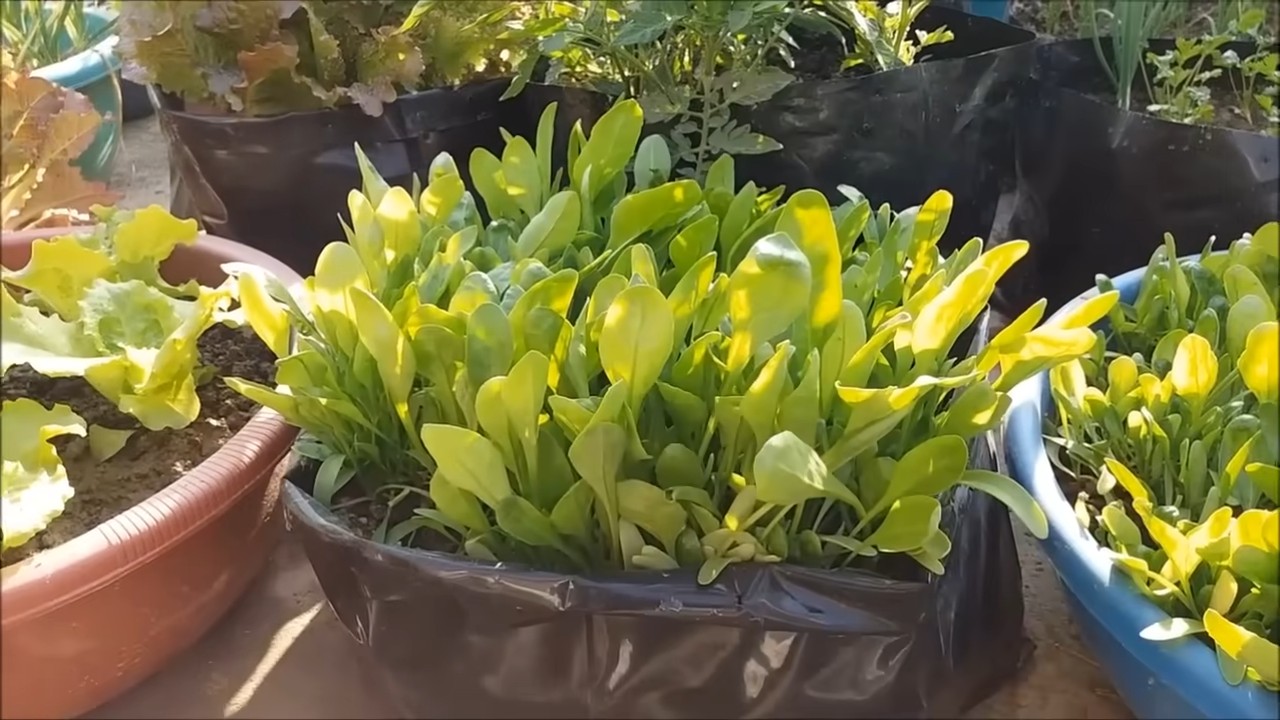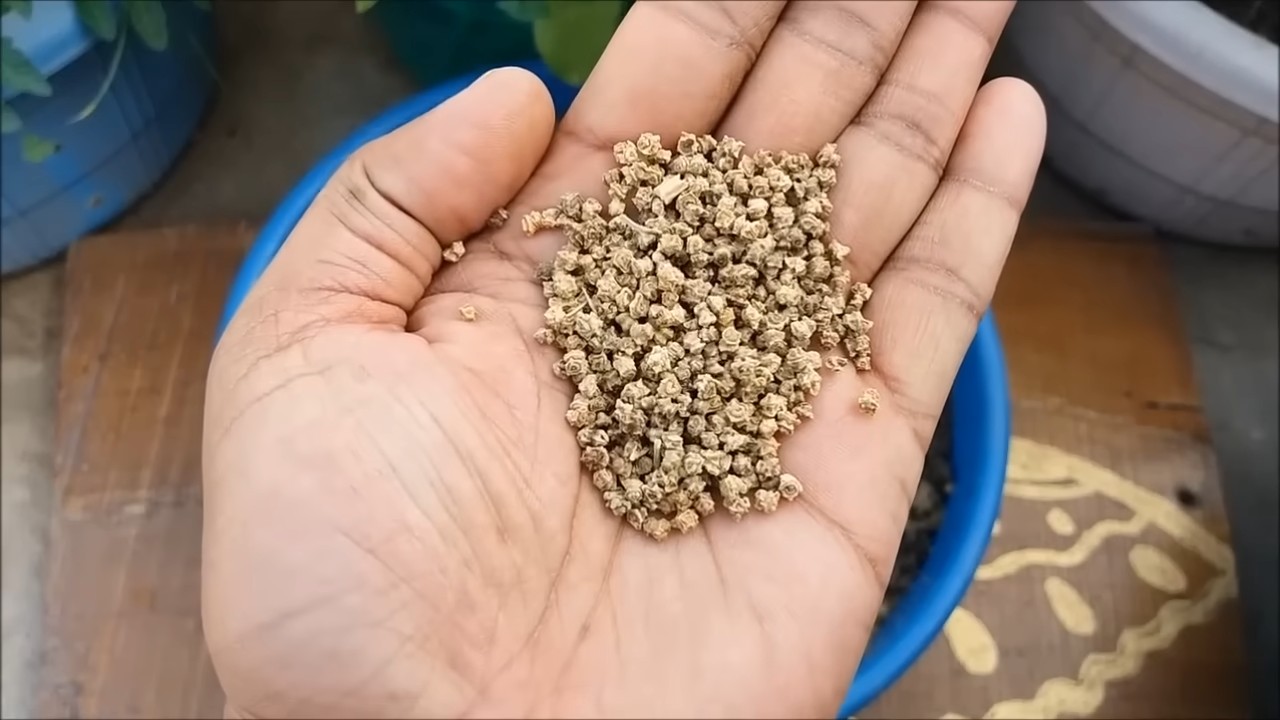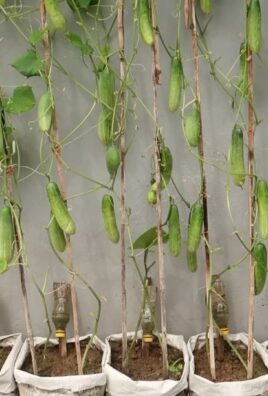Grow Spinach at Home – and unlock a world of fresh, nutritious greens right at your fingertips! Have you ever dreamt of strolling into your backyard and harvesting vibrant, leafy spinach for a delicious salad or a healthy smoothie? Well, dream no more! This DIY guide is your key to transforming that dream into a reality, even if you have limited space or gardening experience.
Spinach, a powerhouse of vitamins and minerals, has been cultivated for centuries, with its origins tracing back to ancient Persia. From its humble beginnings, it has journeyed across continents, becoming a staple in cuisines worldwide. But why rely solely on grocery stores when you can cultivate your own supply of this superfood?
In today’s world, where access to fresh, organic produce can be challenging and expensive, learning how to grow spinach at home offers a fantastic solution. Not only will you save money, but you’ll also gain the satisfaction of nurturing your own food from seed to table. Plus, you’ll know exactly what’s going into your spinach, free from harmful pesticides and chemicals. So, let’s dive into the simple, yet effective, tricks and hacks that will have you harvesting a bountiful spinach crop in no time!

Grow Your Own Delicious Spinach: A Beginner’s Guide
Hey there, fellow gardening enthusiasts! I’m so excited to share my experience with growing spinach at home. It’s surprisingly easy, incredibly rewarding, and nothing beats the taste of fresh, homegrown spinach in your salads, smoothies, or cooked dishes. This guide will walk you through every step, from choosing the right variety to harvesting your leafy greens. Let’s get started!
Choosing the Right Spinach Variety
Before you even think about planting, you need to pick the right spinach variety for your climate and growing conditions. Here’s a quick rundown of some popular options:
* Savoy Spinach: These varieties have crinkled, curly leaves and are known for their cold hardiness. ‘Bloomsdale’ is a classic Savoy choice.
* Semi-Savoy Spinach: A good compromise between Savoy and smooth-leaf varieties. They’re slightly crinkled and offer good disease resistance. ‘Tyee’ is a popular semi-savoy option.
* Smooth-Leaf Spinach: These varieties have flat, smooth leaves that are easy to clean. They’re often preferred for processing and salads. ‘Space’ is a widely grown smooth-leaf variety.
* Heat-Resistant Spinach: If you live in a warmer climate, look for heat-resistant varieties like ‘Malabar’ or ‘New Zealand’ spinach (though technically not true spinach, they taste similar and thrive in heat).
Consider your local climate and the time of year you’ll be planting. Spinach prefers cool weather, so spring and fall are generally the best times to grow it.
Preparing Your Spinach Bed
Spinach thrives in well-drained, fertile soil with a pH between 6.5 and 7.0. Here’s how to prepare your garden bed:
* Choose a Sunny Location: Spinach needs at least 3-4 hours of direct sunlight per day.
* Clear the Area: Remove any weeds, rocks, and debris from the planting area.
* Amend the Soil: This is crucial! Spinach needs nutrient-rich soil. Incorporate plenty of compost, well-rotted manure, or other organic matter into the soil. I usually add a generous layer of compost (about 2-3 inches) and mix it in thoroughly.
* Test the Soil pH (Optional): If you’re unsure about your soil pH, you can purchase a soil testing kit from your local garden center. If the pH is too low (acidic), add lime to raise it. If it’s too high (alkaline), add sulfur to lower it.
* Loosen the Soil: Use a garden fork or tiller to loosen the soil to a depth of at least 6-8 inches. This will allow the spinach roots to grow easily.
* Rake the Soil Smooth: Rake the surface of the soil to create a smooth, even planting bed.
Planting Your Spinach Seeds
Now for the fun part – planting! You can start spinach seeds directly in the garden or start them indoors and transplant them later. I prefer direct sowing because spinach doesn’t always transplant well.
1. Timing is Key: Plant spinach seeds in early spring (as soon as the soil can be worked) or in the fall (about 4-6 weeks before the first expected frost).
2. Sowing Seeds: Sow the seeds about ½ inch deep and 1 inch apart in rows that are 12-18 inches apart. You can use a garden trowel or your finger to make small furrows in the soil.
3. Cover the Seeds: Gently cover the seeds with soil and lightly pat it down.
4. Water Thoroughly: Water the planting area gently but thoroughly. You want to moisten the soil without washing away the seeds.
5. Keep the Soil Moist: Keep the soil consistently moist until the seeds germinate. This usually takes about 5-10 days.
Caring for Your Spinach Plants
Once your spinach seedlings emerge, it’s important to provide them with proper care to ensure a healthy and abundant harvest.
* Thinning: When the seedlings are about 2 inches tall, thin them to 3-6 inches apart. This will give them enough room to grow and prevent overcrowding. You can eat the thinned seedlings in salads!
* Watering: Spinach needs consistent moisture, especially during hot weather. Water deeply whenever the top inch of soil feels dry. Avoid overhead watering, as this can promote fungal diseases. Soaker hoses or drip irrigation are ideal.
* Weeding: Keep the garden bed free of weeds, which can compete with the spinach plants for nutrients and water. Hand-pull weeds carefully to avoid disturbing the spinach roots.
* Fertilizing: Spinach is a heavy feeder, so it benefits from regular fertilization. Side-dress the plants with a nitrogen-rich fertilizer (like blood meal or fish emulsion) every 2-3 weeks. Follow the instructions on the fertilizer package.
* Pest Control: Spinach is relatively pest-resistant, but it can be susceptible to aphids, flea beetles, and leaf miners. Inspect your plants regularly for signs of pests. You can control aphids with a strong spray of water or insecticidal soap. Row covers can help prevent flea beetles and leaf miners from attacking your plants.
* Bolting Prevention: Bolting (when the plant sends up a flower stalk) is a common problem with spinach, especially in hot weather. Bolting makes the leaves bitter and inedible. To prevent bolting, choose heat-resistant varieties, provide shade during the hottest part of the day, and water regularly. You can also pinch off any flower stalks that appear.
Harvesting Your Spinach
Harvesting spinach is the most rewarding part of the process! You can start harvesting when the leaves are about 4-6 inches long.
1. Harvesting Time: Harvest spinach in the morning, when the leaves are crisp and cool.
2. Harvesting Method: You can harvest the entire plant at once by cutting it off at the base, or you can harvest individual leaves as needed. I prefer to harvest individual leaves because it allows the plant to continue producing for a longer period.
3. How to Harvest Individual Leaves: Use a sharp knife or scissors to cut the outer leaves, leaving the inner leaves to continue growing.
4. Washing and Storing: Wash the harvested spinach leaves thoroughly in cold water to remove any dirt or debris. Pat them dry with a paper towel or salad spinner. Store the spinach in a plastic bag in the refrigerator for up to a week.
Troubleshooting Common Spinach Problems
Even with the best care, you might encounter some problems while growing spinach. Here are a few common issues and how to address them:
* Poor Germination: If your spinach seeds aren’t germinating, it could be due to several factors:
* Old Seeds: Spinach seeds lose their viability quickly, so use fresh seeds whenever possible.
* Soil Temperature: Spinach seeds germinate best in cool soil (around 50-65°F). If the soil is too warm, the seeds may not germinate.
* Moisture: The soil needs to be consistently moist for the seeds to germinate.
* Planting Depth: Planting the seeds too deep can also prevent germination.
* Yellowing Leaves: Yellowing leaves can indicate a nutrient deficiency, especially nitrogen. Side-dress the plants with a nitrogen-rich fertilizer. Overwatering can also cause yellowing leaves, so make sure the soil is well-drained.
* Bolting: As mentioned earlier, bolting is a common problem with spinach. To prevent bolting, choose heat-resistant varieties, provide shade, and water regularly.
* Pest Infestations: Inspect your plants regularly for signs of pests and take action promptly.
Extending Your Spinach Season
To enjoy fresh spinach for as long as possible, consider these tips for extending your growing season:
* Succession Planting: Sow new seeds every 2-3 weeks to ensure a continuous harvest.
* Cold Frames or Row Covers: Use cold frames or row covers to protect your spinach plants from frost and extend the growing season into the winter.
* Shade Cloth: Use shade cloth to protect your spinach plants from the hot summer sun and prevent bolting.
Enjoying Your Homegrown Spinach
Now that you’ve successfully grown your own spinach, it’s time to enjoy the fruits (or rather, leaves!) of your labor. Here are a few ideas:
* Salads: Fresh spinach is a delicious addition to any salad.
* Smoothies: Add a handful of spinach to your smoothies for a boost of nutrients.
* Sautéed Spinach: Sauté spinach with garlic and olive oil for a simple and healthy side dish.
* Spinach Dip: Make a creamy spinach dip for parties or gatherings.
* Spinach Quiche: Add spinach to your quiche for a flavorful and nutritious meal.
Growing spinach at home

Conclusion
So, there you have it! Growing spinach at home is not only achievable, but it’s also incredibly rewarding. Forget those limp, pre-packaged greens from the supermarket. Imagine stepping into your garden or onto your balcony and harvesting crisp, vibrant spinach leaves bursting with flavor and nutrients. This DIY approach puts you in control, allowing you to cultivate the freshest, most delicious spinach imaginable.
Why is this a must-try? Because it’s about more than just saving money (though that’s a definite perk!). It’s about connecting with your food, understanding where it comes from, and enjoying the satisfaction of nurturing something from seed to table. It’s about reducing your carbon footprint by eliminating transportation and packaging waste. And, let’s be honest, it’s just plain fun!
Beyond the basic method outlined, there’s plenty of room for experimentation. Try different varieties of spinach, like the smooth-leaved ‘Melody’ or the savoyed ‘Bloomsdale Long Standing’. Consider companion planting – spinach thrives alongside radishes, lettuce, and strawberries. You can even extend your growing season by using cold frames or row covers to protect your plants from frost.
For those with limited space, container gardening is your best friend. A large pot or even a repurposed container can provide ample room for a thriving spinach patch. Just ensure proper drainage and use a high-quality potting mix. Vertical gardening is another excellent option for maximizing space, allowing you to grow spinach on walls or trellises.
Don’t be intimidated if you’re a beginner gardener. Spinach is relatively easy to grow, and even small successes can be incredibly motivating. The key is to provide the right conditions: well-drained soil, adequate sunlight, and consistent watering. Don’t be afraid to experiment and learn from your mistakes. Every gardener, no matter how experienced, has faced challenges along the way.
We wholeheartedly encourage you to give this DIY trick a try. Start small, perhaps with just a few plants, and see how it goes. You might be surprised at how quickly you become hooked on the joys of homegrown spinach.
And most importantly, we want to hear about your experience! Share your tips, tricks, and triumphs in the comments below. Let us know what varieties you’re growing, what challenges you’ve faced, and what delicious dishes you’re creating with your homegrown spinach. Your insights can help other aspiring gardeners embark on their own spinach-growing adventures. Let’s build a community of home gardeners, sharing our knowledge and passion for fresh, healthy food. So, grab your seeds, get your hands dirty, and start growing spinach at home today! You won’t regret it.
Frequently Asked Questions (FAQs)
What is the best time of year to plant spinach?
Spinach is a cool-season crop, meaning it thrives in cooler temperatures. The best time to plant spinach is either in early spring or early fall. For a spring crop, sow seeds as soon as the ground can be worked, typically 4-6 weeks before the last expected frost. For a fall crop, sow seeds 6-8 weeks before the first expected frost. This allows the plants enough time to mature before the weather gets too cold. In warmer climates, you can grow spinach throughout the winter. Avoid planting spinach during the heat of summer, as high temperatures can cause it to bolt (go to seed) prematurely, resulting in bitter-tasting leaves.
How much sunlight does spinach need?
Spinach needs at least 3-6 hours of direct sunlight per day to grow well. While it can tolerate some shade, especially during the hottest part of the day, insufficient sunlight can lead to leggy growth and reduced yields. If you’re growing spinach indoors, supplement natural light with grow lights to ensure adequate illumination.
What kind of soil is best for growing spinach?
Spinach prefers well-drained, fertile soil that is rich in organic matter. The ideal soil pH is between 6.5 and 7.0. Before planting, amend the soil with compost or well-rotted manure to improve its fertility and drainage. Avoid heavy clay soils, as they can become waterlogged and hinder root growth. If you have clay soil, consider adding sand and organic matter to improve its structure.
How often should I water spinach?
Spinach needs consistent moisture to thrive. Water deeply and regularly, especially during dry periods. Aim to keep the soil consistently moist but not waterlogged. Overwatering can lead to root rot, while underwatering can cause the leaves to wilt and become bitter. A good rule of thumb is to water when the top inch of soil feels dry to the touch. Mulching around the plants can help retain moisture and suppress weeds.
How do I prevent spinach from bolting?
Bolting is a common problem with spinach, especially during hot weather. To prevent bolting, choose bolt-resistant varieties, plant spinach in a location that receives some shade during the hottest part of the day, and water regularly to keep the soil cool and moist. You can also use shade cloth to protect the plants from excessive heat. Harvest spinach leaves regularly, as this can also help delay bolting.
What are some common pests and diseases that affect spinach?
Spinach is susceptible to several pests and diseases, including aphids, leaf miners, flea beetles, and downy mildew. To prevent pest and disease problems, practice good garden hygiene, such as removing weeds and debris that can harbor pests and diseases. Inspect your plants regularly for signs of infestation or disease, and take action promptly if you notice any problems. Organic pest control methods, such as insecticidal soap or neem oil, can be effective against aphids and other pests. For downy mildew, choose disease-resistant varieties and ensure good air circulation around the plants.
How do I harvest spinach?
You can harvest spinach leaves as soon as they are large enough to eat, typically when they are 4-6 inches long. Harvest the outer leaves first, leaving the inner leaves to continue growing. This allows you to enjoy a continuous harvest over several weeks. To harvest, simply snip the leaves off at the base of the plant with scissors or a knife. Wash the leaves thoroughly before eating.
Can I grow spinach in containers?
Yes, spinach grows well in containers. Choose a container that is at least 6-8 inches deep and has drainage holes. Use a high-quality potting mix and water regularly. Container-grown spinach may need more frequent watering than spinach grown in the ground, as the soil in containers tends to dry out more quickly. Place the container in a location that receives at least 3-6 hours of sunlight per day.
How do I store harvested spinach?
To store harvested spinach, wash the leaves thoroughly and pat them dry with a paper towel. Store the spinach in a plastic bag or container in the refrigerator. Spinach is best used within a few days of harvesting, as it will wilt and lose its flavor over time. You can also freeze spinach for longer storage. To freeze spinach, blanch the leaves in boiling water for 2 minutes, then plunge them into ice water to stop the cooking process. Drain the spinach well and squeeze out any excess water. Pack the spinach into freezer bags or containers and freeze.
What are some ways to use homegrown spinach?
Homegrown spinach can be used in a variety of dishes. It can be eaten raw in salads, added to smoothies, or sautéed with garlic and olive oil. Spinach is also a great addition to soups, stews, and casseroles. You can also use it to make spinach pie, quiche, or spanakopita. The possibilities are endless! Enjoy the fresh, delicious flavor of your homegrown spinach in your favorite recipes.




Leave a Comment